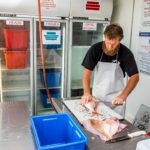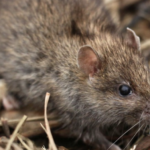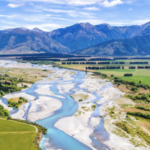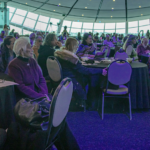At last year’s Hauraki Gulf Marine Park Seminar I talked about the trials and tribulations of studying New Zealand’s elusive false killer whales.
Over the past 12 months encouraging progress has been made.
An unusual string of strandings and sightings off the South island’s east coast that started in June 2016 continued into the New Year.
Strandings are sad events but they do teach us a lot about cryptic species like the false killer whale. The samples that were obtained will provide vital information about these even more mysterious South Island individuals.

It’s hard to say whether these extremely rare South Island incidents were a series of one-off events or whether they are the result of increased awareness of a species that often gets confused with pilot whales. Either way, it’s great to see the number of reports grow steadily as our sighting network expands. We now receive calls from a wide range of stakeholders, including researchers, whale watch operators, fishermen, DoC staff, stranding organisations and even pilots. It’s a fantastic example of what can be achieved when people get behind a project.
And so it was due to our sighting network that we finally managed to catch up with false killer whales during our last yacht survey in May.
Following on from a series of reported sightings off the Hen and Chicken Islands during summer, we decided to sail our 22-metre ketch Manawanui down from its base in the Bay of Islands. The outer Gulf appears to be the centre of the whales’ range when they enter coastal waters during summer and autumn. We were hopeful to get lucky one last time before the whales ventured to their unknown wintering grounds.
As we rounded Cape Brett, we received a report that false killer whales had been sighted near the Hen and Chickens, heading in a southerly direction away from us. At our speed, this meant that we wouldn’t get to the area until the next morning but we decided to take the chance. We arrived in the area at first light and spent several hours searching, only to receive a call that the whales had been sighted again, this time off the Poor Knights Islands, heading in a northerly direction. Our paths must have crossed during the night. Somewhat disheartened, knowing that we wouldn’t reach the Poor Knights before nightfall, we decided to track all the way back to the Knights and to give it one last shot the next morning before a predicted turn in the weather.
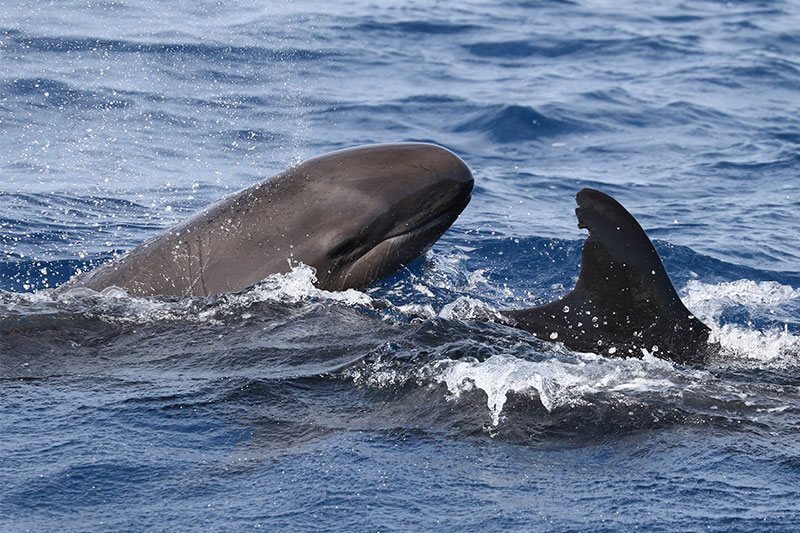
We pulled anchor just before dawn and were still having breakfast when, out of the corner of my eye, I noticed a little splash on the horizon. A quick check through the binoculars revealed that the little splash was in fact a pilot whale going somewhere in a hurry. A nice start to the day. A further check revealed a whole pod of pilot whales. As the pod approached we also saw bottlenose dolphins in the group and as our excitement grew we observed the unmistakable breach of a false killer whale. A super pod of false killer whales, pilot whales and bottlenose dolphins was travelling at speed towards our anchorage. Our wild goose chase had finally come to an end and after three days of searching, the whales had actually found us!
We spent a fantastic day of data collection, identifying many familiar individuals whose movements we have now been tracking for 15 years. We gained new insights into the possible functions of the near-permanent associations between false killer whales and bottlenose dolphins. We also covered over 100km which shows just how much distance these whales can cover in a day and why it’s so hard to catch up with them. The whales took us from deep offshore waters to shallow bays, feeding on snapper, kahawai, kingfish and tuna on the way and entertaining us with their impressive acrobatics. We left them at dusk north of the Bay of Islands where our search had started three days earlier. A truly exciting end to our survey season.
We are now analysing last season’s data to add a few more pieces to the puzzle that is the New Zealand false killer whale population. We’re excited to learn what the genetic samples will tell us about these whales and how the New Zealand population fits into the wider global context. We continue to push both, the research and the public awareness of this little-known species and some exciting projects lie just ahead; our work on New Zealand false killer whales and their associations with bottlenose dolphins will feature in the BBC’s upcoming Blue Planet II series to be aired later this year and I’m confident that it will generate greater awareness of this fascinating species. Our research also suggests that, despite their scarcity, false killer whales may be important components of near-shore ecosystems such as the outer Hauraki Gulf. We are very excited to be entering collaborations, looking into the way false killer whales facilitate feeding relationships with other taxa such as the endangered black petrel.
False killer whale research continues to be a challenge but interest and awareness are growing. You can help by reporting your sighting to 0800 FAR OUT (0800 326 688). My dream is that one day the false killer whale will be as well-known, loved and protected in New Zealand as its better-known name sake the (real) killer whale or orca.




